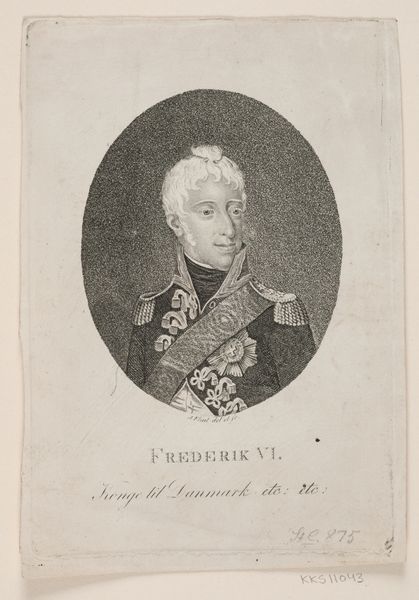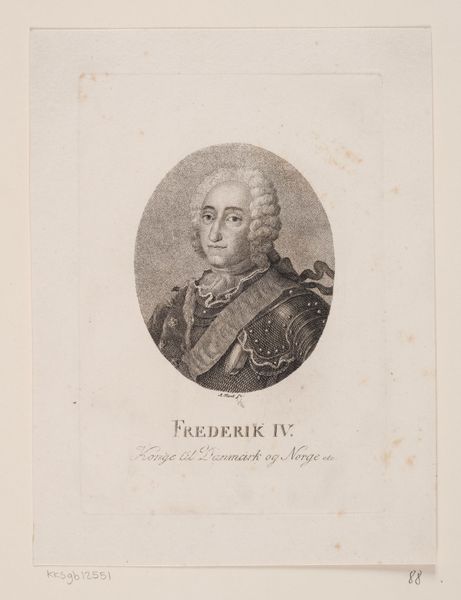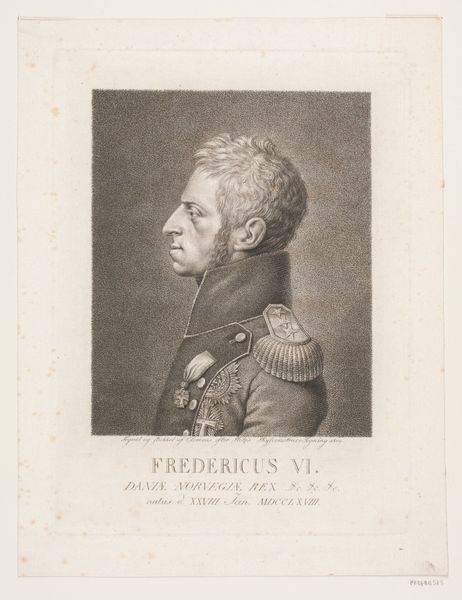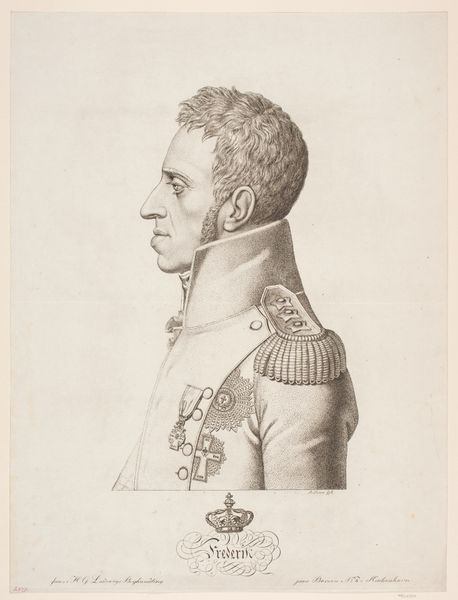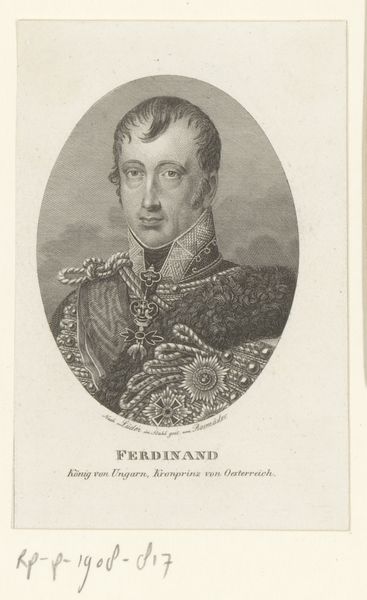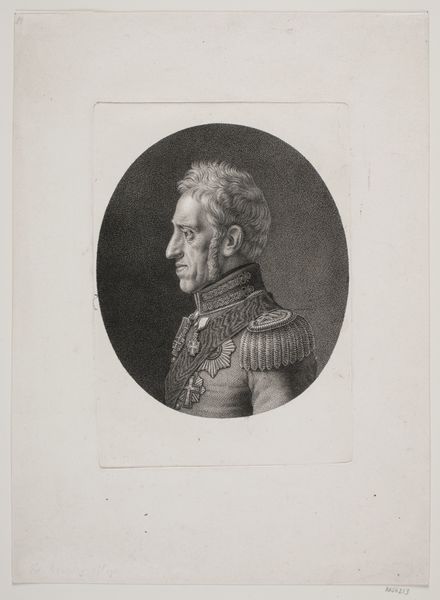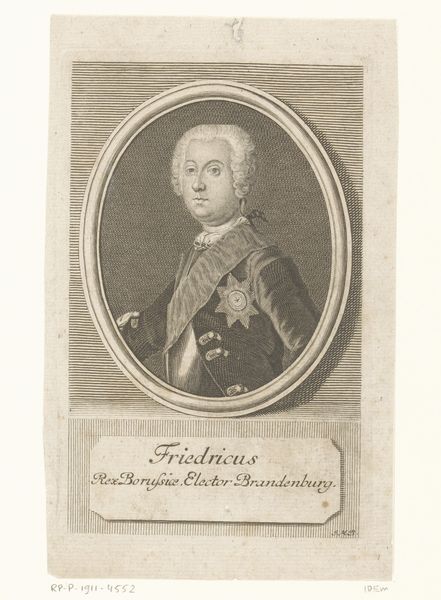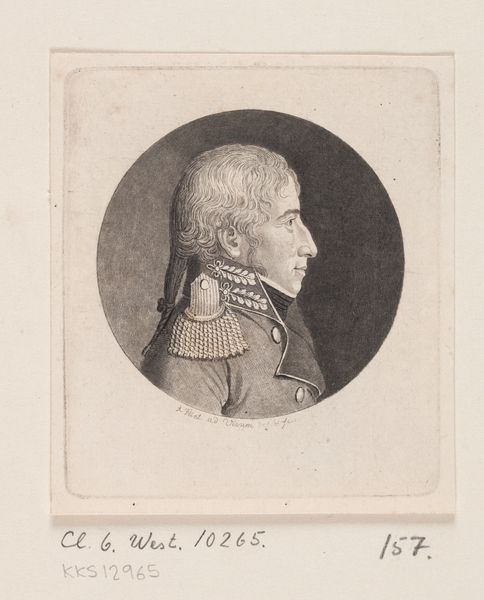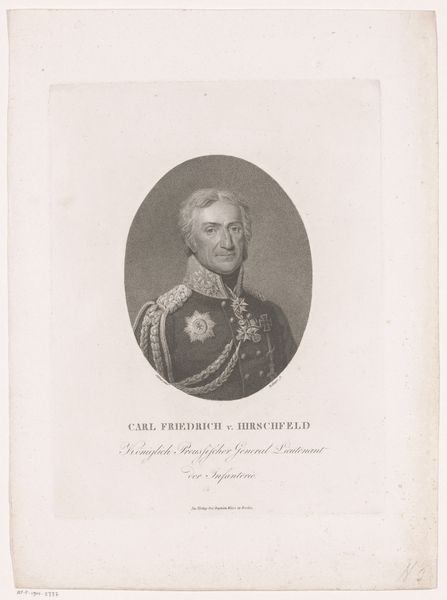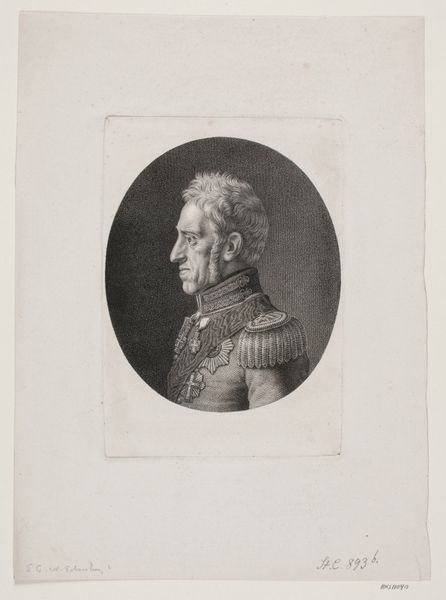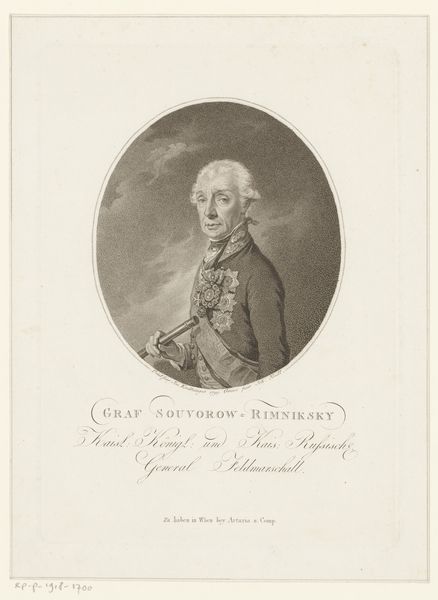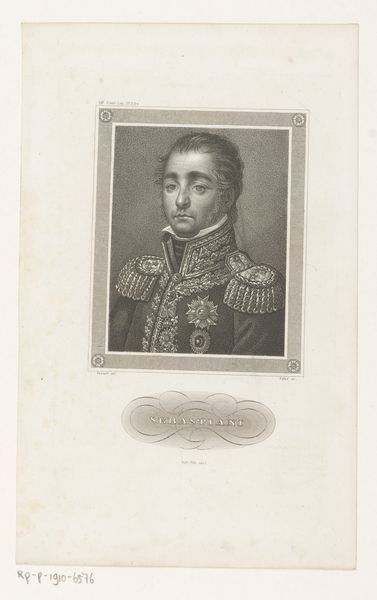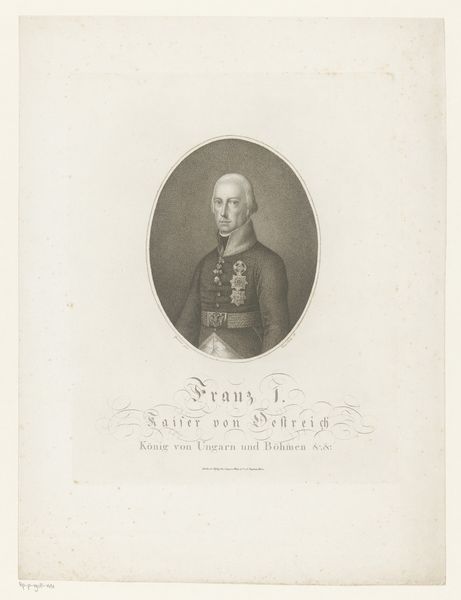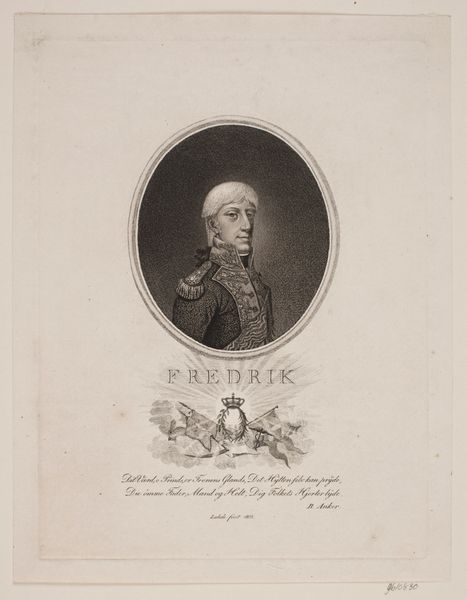
print, engraving
#
portrait
# print
#
old engraving style
#
classical-realism
#
history-painting
#
engraving
#
columned text
Dimensions: 90 mm (None) x 70 mm (None) (billedmaal), 138 mm (height) x 83 mm (width) (bladmaal)
Editor: We're looking at Andreas Flint’s engraving, "Kong Frederik VI," placing our Danish monarch somewhere between 1767 and 1824. There's a sternness to the profile, a real sense of duty etched into those delicate lines. What leaps out at you? Curator: Oh, duty, certainly. But look closer – those incredibly fine lines of the engraving create such an interesting, almost fragile, humanity, don’t you think? Like a king behind glass, vulnerable in his power. I can't help but wonder about Flint's intent here...was he striving for reverence, or something more psychologically complex? Think about the time, the changing tides of revolution swirling across Europe. Could this be a subtle commentary on the precariousness of kingship itself? Editor: I hadn't considered the fragility... I was stuck on the uniform and regalia screaming power. Curator: Power, absolutely! But Andreas Flint wasn't just rendering finery; he was playing with a cultural icon, reinterpreting the King for a world on the brink of change. He must have felt something profound translating a living person into something permanent yet fleeting. Editor: So, more than just a portrait, it's a little… dare I say… rebellious? Curator: Rebellious might be too strong a word. Reflective, perhaps? Curious about power, undeniably. Andreas Flint wasn’t simply recording history; he was participating in it. Now, do you see anything different? Editor: Definitely. I see less authority, more… question. And now I'm questioning, too! Curator: Excellent. That’s art working its magic, one engraving at a time.
Comments
No comments
Be the first to comment and join the conversation on the ultimate creative platform.
